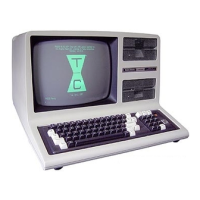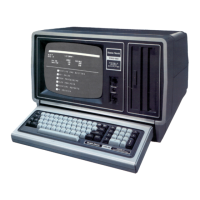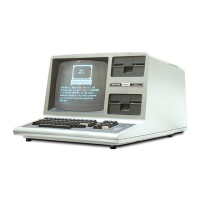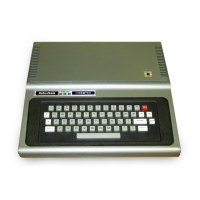General Information
Drive Specification
If
you
give
TRSDOS
a file
command
like:
hILL.
TEST/1
the
System will search for the file
TEST/l,
starting
at
Drive °
and
going to the
other
drives in sequence 1,2,3 until it finds the file.
Anytime
TRSDOS has
to
Open afile (e.g.,
to
List
it
for you)
it
will follow the drive
lookup sequence 0,
1,2,3. When TRSDOS has
to
create a
new
file,
it
will skip over
any write-protected or full diskettes.
It
is
possible
to
tell the System exactlywhich drive you want to use, by means
of
the
drive specification. A drive specification consists
of
a
colon:
followed
by
one
of
the
digits 0,1,2,
or
3, corresponding to one
of
the
four drives.
For
example:
hIL.L..
TES"['/1:3
tells
the
System to look for the file
TEST/l
on
drive 3 only.
Passwords
You
can
protect
a file from unauthorized access by assigning passwords to the
file.
That
way, a person
cannot
access a file simply by referring to the file
name;
he
must
also use
the
appropriate password for that file.
TRSDOS
allows you to assign two passwords to a file:
•
An
"Update
word",
which grants the user total access to the information
(execute,
read,
write,
rename
or
delete).
•
An
"Access
word",
which grants the user limited access to the information
(see
A
TTRIB
).
When
you
create
a file,
the
Update
and Access words are
both
setequalto the
password you specify.
You
can change them later with the
PROT
or
ATTRIB
command.
A password consists
of
a
period.
followed by 1 to 8 letters
or
numbers.
If
you
do
not
assign a password to a file, the System uses a default password
of
8
blanks.
In
this case the file
is
said
to
be unprotected; one can gain total access
simply by referring to the file name.
61

